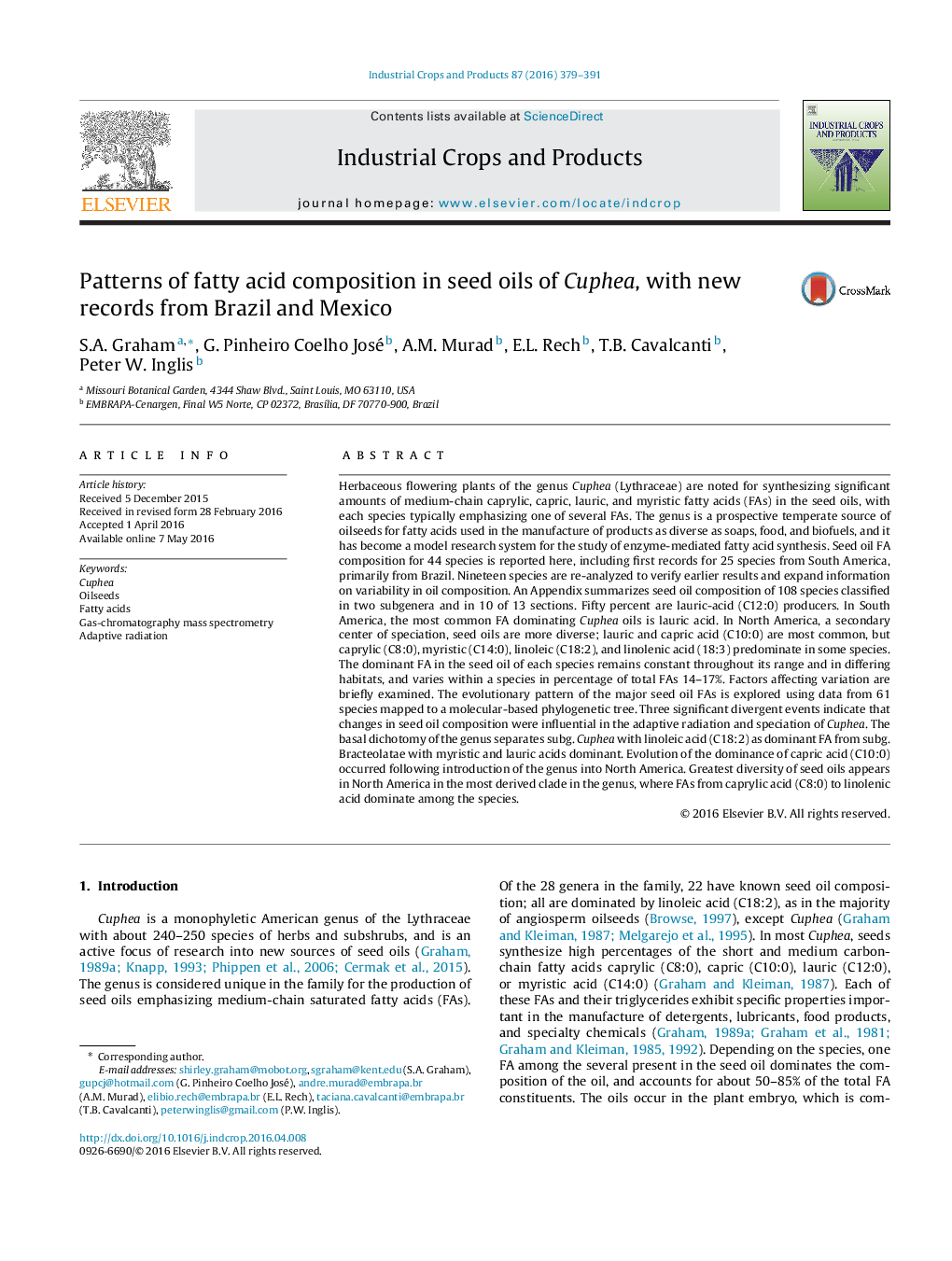| کد مقاله | کد نشریه | سال انتشار | مقاله انگلیسی | نسخه تمام متن |
|---|---|---|---|---|
| 4512231 | 1624823 | 2016 | 13 صفحه PDF | دانلود رایگان |

• Seed oils of Cuphea produce a diversity of medium-chain fatty acids.
• Fatty acid composition in 44 species is reported, with 25 first-time reports.
• In South America lauric acid predominates in Cuphea seed oil.
• Greatest diversity of dominant fatty acids in Cuphea seed oil occurs in North America.
• Three significant events occurred in the evolution of Cuphea seed oil composition.
Herbaceous flowering plants of the genus Cuphea (Lythraceae) are noted for synthesizing significant amounts of medium-chain caprylic, capric, lauric, and myristic fatty acids (FAs) in the seed oils, with each species typically emphasizing one of several FAs. The genus is a prospective temperate source of oilseeds for fatty acids used in the manufacture of products as diverse as soaps, food, and biofuels, and it has become a model research system for the study of enzyme-mediated fatty acid synthesis. Seed oil FA composition for 44 species is reported here, including first records for 25 species from South America, primarily from Brazil. Nineteen species are re-analyzed to verify earlier results and expand information on variability in oil composition. An Appendix summarizes seed oil composition of 108 species classified in two subgenera and in 10 of 13 sections. Fifty percent are lauric-acid (C12:0) producers. In South America, the most common FA dominating Cuphea oils is lauric acid. In North America, a secondary center of speciation, seed oils are more diverse; lauric and capric acid (C10:0) are most common, but caprylic (C8:0), myristic (C14:0), linoleic (C18:2), and linolenic acid (18:3) predominate in some species. The dominant FA in the seed oil of each species remains constant throughout its range and in differing habitats, and varies within a species in percentage of total FAs 14–17%. Factors affecting variation are briefly examined. The evolutionary pattern of the major seed oil FAs is explored using data from 61 species mapped to a molecular-based phylogenetic tree. Three significant divergent events indicate that changes in seed oil composition were influential in the adaptive radiation and speciation of Cuphea. The basal dichotomy of the genus separates subg. Cuphea with linoleic acid (C18:2) as dominant FA from subg. Bracteolatae with myristic and lauric acids dominant. Evolution of the dominance of capric acid (C10:0) occurred following introduction of the genus into North America. Greatest diversity of seed oils appears in North America in the most derived clade in the genus, where FAs from caprylic acid (C8:0) to linolenic acid dominate among the species.
Journal: Industrial Crops and Products - Volume 87, September 2016, Pages 379–391